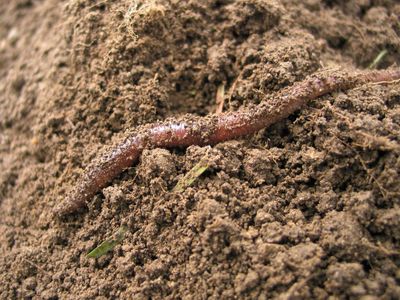Is it getting too much or too little water? Is it getting too much or too little sunlight? Is it getting enough fertilizer?
However, sometimes the questions we need to ask are: Is it receiving enough oxygen? Should I aerate the soil? Continue reading to learn more about soil aeration in the garden.
Soil Aeration Info
Most homeowners understand that every so often their lawn may need to be aerated. A buildup of thatch and foot traffic from family and pets can cause lawn soil to become compacted. As the soil becomes compacted, it loses more and more space to hold oxygen. Without oxygen, the plant’s vascular systems are not able to function properly and their roots are unable to absorb water. Microbes and organisms that live in the soil also need oxygen to survive. When soil compaction is an issue in the lawn, lawn care technicians recommend aerating the lawn. Soil aeration is usually done either with a plug aerator or a spike aerator. A plug aerator removes actually cylindrical plugs from the soil. A spike aerator pokes holes in the soil with a spike. Most lawn professionals recommend using plug aeration because piercing the soil with spikes may cause more soil compaction.
Why Does Soil Need to be Aerated?
The benefits of soil aeration are rich, fertile, properly draining soil and full, healthy plants. Without an adequate exchange of water and oxygen within the spaces between soil particles, trees, shrubs, and herbaceous plants may suffer too. Large or dense root structures can cause soil compaction in landscape beds. Plants that have flourished in the past may suddenly wilt, drop leaves, and not bloom, as they are unable to respire from soil compaction around their roots. This can also happen to large potted plants in time as well. Up-potting or transplanting large plants in compacted soil is not always possible. It is also not easy to use a plug or spike aerator in a landscape bed or container. While spike aerators are available as handheld tools with a long handle and spikes that rotate around a small wheel, it is necessary to take care around the large surface roots of trees and shrubs. Root damage can leave an already weak, struggling plant more vulnerable to pests and diseases. In containers or other tight locations of the garden, it may be necessary to hand drive a single spike to aerate compacted soil. Building raised landscape berms or digging planting holes 2-3 times the width of the plant’s root ball can also help prevent garden soil compaction. Additionally, you can add earthworms to the soil in your garden beds or containers and allow them to do the work of aerating while adding organic matter of their own for nutrient uptake.
